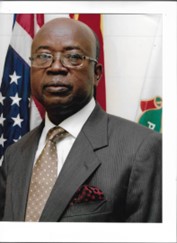…essential insights from “a heritage of toil and restlessness” for education providers
By E. KINGSLEY LARBI (Rev. Prof.)
In the heart of Ghana, where the past and present blend seamlessly, lies the story of a small town, Larteh, captured poignantly in Chapter 2, “A Heritage of Toil and Restlessness.” This chapter, a cornerstone of a larger narrative, opens a window into the soul of Ghana—its cultural depth, historical resilience, and the ongoing dance between traditional beliefs and modern faiths. It’s a tale that not only resonates with the echoes of ancestors but also reverberates through the corridors of contemporary Ghanaian society, making it a compelling case study for educational discourse.
As Ghana navigates the complexities of a globalized world, the interplay of cultural heritage and education becomes increasingly crucial. In this regard, Chapter 2 offers not just historical insights but practical lessons that are pertinent to educators, policy-makers, and private educational institutions striving to adapt in an ever-evolving landscape. This feature article aims to delve deep into these teachings, exploring how the nuanced understanding of cultural and religious dynamics presented in the chapter can inform and transform educational practices in Ghana today.
Private education providers, including universities, stand at the crossroads of tradition and modernity. To thrive amid global and local challenges, they must reconsider their strategies and practices. This article will outline what these institutions need to know, start doing, continue doing, and stop doing based on the rich cultural insights drawn from Larteh’s story. In doing so, it aims to provide a blueprint for educational institutions to not only survive but flourish by embracing the unique cultural heritage that defines and enriches Ghana.
In the insightful Chapter 2, “A Heritage of Toil and Restlessness,” readers are presented with a compelling narrative that intertwines personal stories with the broader historical and cultural tapestry of Ghana. As this chapter unfolds, it offers vital lessons for educators, readers, and private educational institutions, especially in the challenging contexts of both global and Ghanaian educational landscapes.
Understanding the Core Teachings:
The chapter does more than recount the history of Larteh and its religious transformations; it illustrates the profound interplay between cultural heritage and religious beliefs. This story of cultural resistance and religious integration is not just historical—it’s deeply relevant to understanding community identities today.
Furthermore, by delving into the author’s family history, the chapter highlights the tangible impact of religious and cultural dynamics on social and economic opportunities. These narratives showcase how embracing or resisting religious changes can significantly influence individual and community fortunes.
What Educators Need to Know:
To effectively leverage the rich content of this chapter in educational settings, educators need to ensure students grasp the historical and cultural contexts of Ghanaian society. They should encourage critical engagement with the material, prompting students to explore how cultural and religious shifts affect societal structures and individual lives.
Guidance for Private Educational Providers:
Private educational institutions, including universities in Ghana, must adapt to survive and thrive amidst both global challenges and local expectations. Here’s a structured approach to how they can align their strategies with the needs of their diverse student populations:
Knowledge is Power:
Understanding the local cultural and historical context is crucial. Institutions should integrate Ghanaian history and cultural studies into their curriculum to enrich students’ educational experiences.
Embracing Local Relevance: It’s time to start engaging directly with the communities served by these institutions. This involves tailoring educational programs to reflect the local cultural and economic realities, ensuring that education is not only accessible but also relevant.
Sustaining Inclusivity:
Continuing efforts to provide scholarships and support for students from varied backgrounds is essential. This inclusivity enriches the learning environment and ensures that all students have the opportunity to succeed.
Avoiding Assumptions:
Private educational institutions must move away from a one-size-fits-all approach to education. Recognizing the unique cultural backgrounds and needs of their students is essential for creating supportive and effective learning environments.
Implications
By embedding these practices into their operational ethos, private universities and educational providers can enhance their resilience and relevance in the face of both global and local educational challenges. This strategic approach not only promotes academic excellence but also fosters a deeper connection between education and the rich cultural heritage of Ghana.
This adaptation of “A Heritage of Toil and Restlessness” into our educational discourse is more than timely; it’s a necessary step towards a more inclusive and culturally aware educational system in Ghana. As this chapter shows, understanding our past and the layers of our cultural identity can help us build a more robust future.
Conclusion
In conclusion, Chapter 2, “A Heritage of Toil and Restlessness,” offers more than just a historical recount of Larteh’s religious and cultural evolution; it provides essential insights for private education providers in Ghana. By understanding and integrating the nuanced interplay of traditional beliefs and modern education into their curricula and practices, these institutions can enhance their relevance and resilience.
The chapter underscores the importance of cultural sensitivity and inclusivity, urging educators and institutions to embrace local contexts and community engagement. Ultimately, the lessons drawn from Larteh’s rich heritage can guide private educational institutions in crafting strategies that are both culturally aware and educationally effective, ensuring their growth and sustainability in the challenging landscapes of Ghana and beyond.










